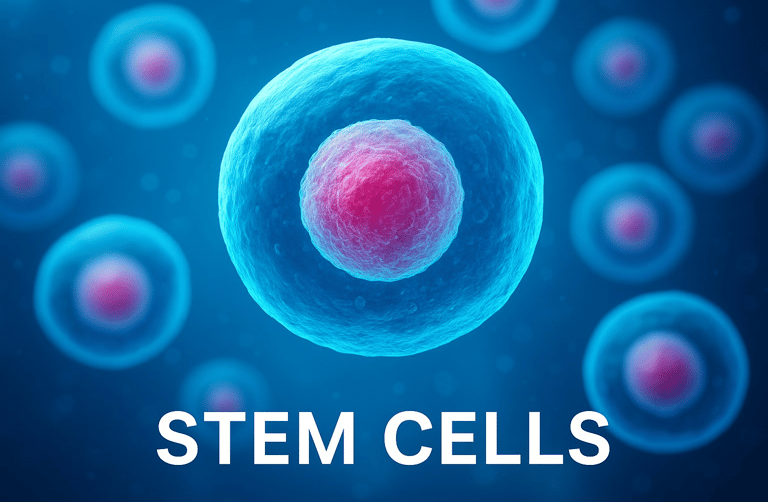Stay updated on what is trending in health. Discover tips and resources for a healthier, balanced life.
Stem Cell Treatment: What You Need to Know Before You Decide
Discover how stem cell treatment works, its benefits, risks, and future potential. Learn which conditions it may help, where it’s available, and how to choose safe, reputable providers.
Dr. S. Ali
8/10/20255 min read


Stem cell therapy is one of those medical buzzwords you’ve probably seen in headlines, heard on podcasts, or even discussed with friends. It’s often described as the future of regenerative medicine, promising everything from joint repair to reversing nerve damage. But what is it really? And is it the miracle cure some claim it to be? Let’s break it down in plain English so you can make an informed decision.
What Exactly Are Stem Cells?
Stem cells are like your body’s raw materials—they have the unique ability to turn into many different cell types, from muscle to nerve to blood cells. Think of them as your body’s repair crew, ready to help heal and regenerate tissues when needed.
There are a few main types:
Embryonic stem cells – Found in early-stage embryos, these can become almost any type of cell in the body. They’re incredibly versatile but also raise ethical and legal debates.
Adult stem cells – Found in tissues like bone marrow, blood, and fat. They’re more specialized and limited in what they can become, but they’re still powerful tools for repair.
Induced pluripotent stem cells (iPSCs) – These are adult cells that scientists have reprogrammed to behave like embryonic stem cells, offering the versatility without some of the ethical concerns.
How Does Stem Cell Treatment Work?
The idea behind stem cell therapy is straightforward: doctors take stem cells—either from your own body (autologous) or from a donor (allogeneic)—and deliver them to a damaged or diseased area. The goal is to encourage the body to repair itself by regenerating healthy cells to replace the damaged ones.
In practice, this might involve extracting stem cells from bone marrow, fat tissue, or blood, processing them in a lab to concentrate and prepare them, and then injecting them directly into the target site. In some cases, cells are grown or modified before being introduced to the body.
Conditions Stem Cell Therapy May Help
While not a cure-all, stem cell treatment has shown promise in both research and clinical practice for a variety of conditions, including:
Joint problems and injuries – Osteoarthritis, torn ligaments, and cartilage damage.
Spinal cord injuries – Potential to restore function in certain cases.
Autoimmune diseases – Such as multiple sclerosis and lupus.
Cardiovascular conditions – Including heart attack recovery and heart failure.
Type 1 diabetes – Research is exploring ways to restore insulin-producing cells.
Neurological disorders – Such as Parkinson’s disease and ALS.
Certain cancers – Especially in bone marrow transplants for blood cancers like leukemia.
It’s important to note that while some uses are well-established—like bone marrow transplants—many others are still considered experimental and are available only through clinical trials.
Benefits of Stem Cell Treatment
One of the biggest draws of stem cell therapy is that it harnesses your body’s natural healing process, potentially reducing the need for invasive surgery.
Potential advantages include:
Shorter recovery times compared to surgery
Reduced pain and inflammation
Lower risk of rejection if your own cells are used
Potential for long-term improvement rather than just symptom management
The exciting part? Unlike many treatments that only manage symptoms, stem cells aim to regenerate damaged tissue—meaning they target the root cause of the problem. Imagine regenerating worn knee cartilage without joint replacement or restoring nerve connections after injury.
Risks and Limitations You Should Know
Like any medical treatment, stem cell therapy isn’t without risks. These may include:
Infection – As with any injection or surgical procedure.
Immune reaction – If donor cells are used.
Abnormal cell growth – Very rare but possible.
Financial cost – Many treatments are not yet covered by insurance and can be expensive.
The biggest limitation? Not all conditions respond equally well to stem cells, and results can vary dramatically from person to person.
Because the field is still developing, there are also concerns about unregulated clinics making unrealistic promises. Some market unapproved therapies without sufficient evidence, so due diligence is essential.
Pro tip: Look for clinics that are part of approved clinical trials or that can provide peer-reviewed data on their results. Avoid providers who promise guaranteed cures or treat every condition under the sun.
Is Stem Cell Tratement Something Available In All Countries?
No — stem cell treatment is not available in all countries, and even in places where it’s offered, the type of treatment and conditions it’s approved for can vary widely.
Here’s why availability differs:
Regulations vary – Some countries, like the U.S., Canada, and much of the EU, have strict rules allowing only certain stem cell treatments (e.g., bone marrow transplants for blood disorders) outside of clinical trials.
Experimental vs. approved use – In countries with tighter oversight, most regenerative medicine applications are still in research stages. In others, clinics may freely offer treatments that aren’t yet proven or approved.
Medical tourism – Because some countries have looser regulations, people often travel abroad for stem cell therapy, especially for orthopedic or anti-aging uses. Popular destinations include parts of Mexico, Panama, Thailand, and certain Eastern European nations.
Quality and safety concerns – Not all international clinics follow the same safety standards, so patients need to research carefully to avoid unregulated or unsafe practices.
What to Expect During the Procedure
Most procedures follow a similar process:
Consultation and assessment – Your doctor will evaluate your condition and decide if you’re a candidate.
Stem cell collection – Taken from your bone marrow, fat tissue, or blood (or provided by a donor).
Processing – The cells are purified and prepared for treatment.
Injection or placement – Cells are delivered to the target area through injection or minor surgery.
In many cases, the procedure is outpatient and takes only a few hours. Recovery is generally quicker than with surgical interventions, though some rest and rehabilitation may still be required.
The Future of Stem Cell Research
Stem cell science is advancing rapidly, with breakthroughs happening every year. Researchers are exploring:
Lab-grown organs for transplant
Gene-edited stem cells for personalized medicine
Targeted cancer therapies using modified stem cells
Improved treatment for degenerative diseases
While many of these possibilities are still in the experimental phase, the potential to revolutionize healthcare is enormous.
Should You Consider Stem Cell Treatment?
If you have a chronic condition or injury that hasn’t responded to standard treatments, stem cell therapy might be worth exploring—especially if you qualify for a reputable clinical trial.
However, success also depends on post-treatment care. You may need physical therapy, dietary adjustments, and follow-up checkups to get the best results.
Bottom line: Stem cell therapy is one of the most exciting areas in modern medicine, but it’s not magic. It works for some people, in some situations, but not all. The best way to decide is by educating yourself, asking tough questions, and working only with trusted medical professionals.
Sources:
Mayo Clinic – Stem Cells: What They Are and What They Do
https://www.mayoclinic.org/tests-procedures/stem-cell-transplant/about/pac-20384833
National Institutes of Health (NIH) – Stem Cell Basics
https://stemcells.nih.gov/info/basics
World Health Organization (WHO) – Regenerative Medicine and Stem Cells
https://www.who.int/health-topics/regenerative-medicine
International Society for Stem Cell Research (ISSCR) – Patient Handbook
https://www.closerlookatstemcells.org/
Johns Hopkins Medicine – Stem Cell Therapy
https://www.hopkinsmedicine.org/health/treatment-tests-and-therapies/stem-cell-therapy
U.S. Food and Drug Administration (FDA) – Important Information About Unapproved Stem Cell Treatments
https://www.fda.gov/consumers/consumer-updates/stem-cell-therapy-know-what-youre-getting
Harvard Stem Cell Institute – Stem Cell Facts
https://hsci.harvard.edu/stem-cell-basics
Pulse Your Health
Empowering you to achieve your health goals.
Contact
© 2025. All rights reserved.
Disclaimer: The content on this website is for informational purposes only and is not medical advice. Always seek the advice of your physician or other suitably qualified healthcare professional for diagnosis, treatment and your health related needs.
